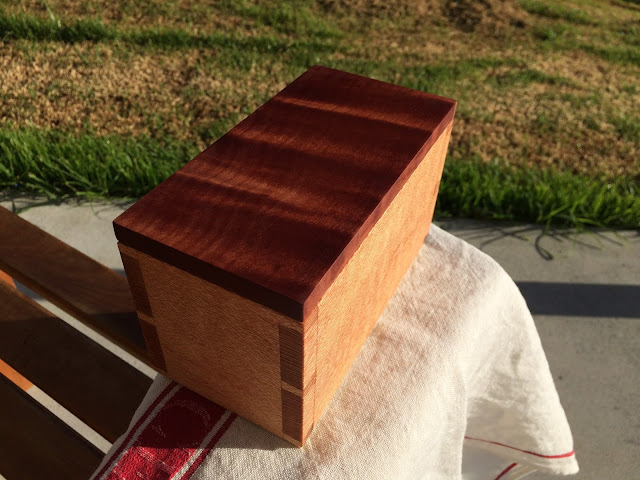As mentioned previously here, another oak wardrobe was purchased off Trade Me for $29 back in mid 2014.
It was a bargain, but not without issues. The main one being either past or current borer activity. There was no way to tell whether the little critters were still alive so it had a liberal application of permethrin and then spent the next year undercover (along with another piece with similar Swiss cheesiness).
With no sign of fresh activity, I began addressing some of the other issues.
Some new American oak trim was installed to match the existing (left hand side door jamb and bottom moulding in photo above).
A new plywood drawer bottom was cut to replace the ugly and broken modern pine one.
And while I was at it the drawer completely fell apart so it was re-glued.
 |
| Before |
The copper plated steel hardware had completely lost its copper plate, so I thought I would have a go at re-plating it with a hydrochloric acid solution, some old copper wire and a 6V battery.
The 6V battery proved to be too vigorous and the copper did not deposit well, so I had another go with an AA battery (1.5V) and this worked just fine.
The result, while not completely uniform, was a great improvement.
 |
| After copper plating. |
Next, the loose mirror was re-secured using small triangular section blocks as per the original. I used a piece of polycarbonate to protect the mirror surface while tapping pins in.
A new plywood back for the mirror was fixed in place and stained to match the carcase. Then all that was left to do was apply a few coats of shellac (orange shellac flakes mixed with methylated spirits and applied using a brush or 'rubber' (cotton wad wrapped in cloth).
The new wood came up ok, but I still haven't got the stain colour right (new jamb strip on the left, original one on the right, below).
Then there was the small logistical issue of how to get the wardrobe across the gravel driveway. The cabriole legs prevented me from using the hand truck, but my shop dollies and a few offcuts of plywood smoothed the path so to speak.
The bargain $29 wardrobe now resides happily in our bedroom - allowing for labour, materials, electricity etc it only cost $6029!











































